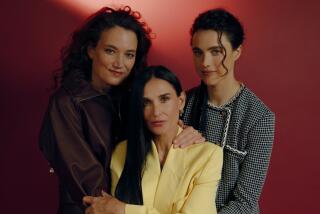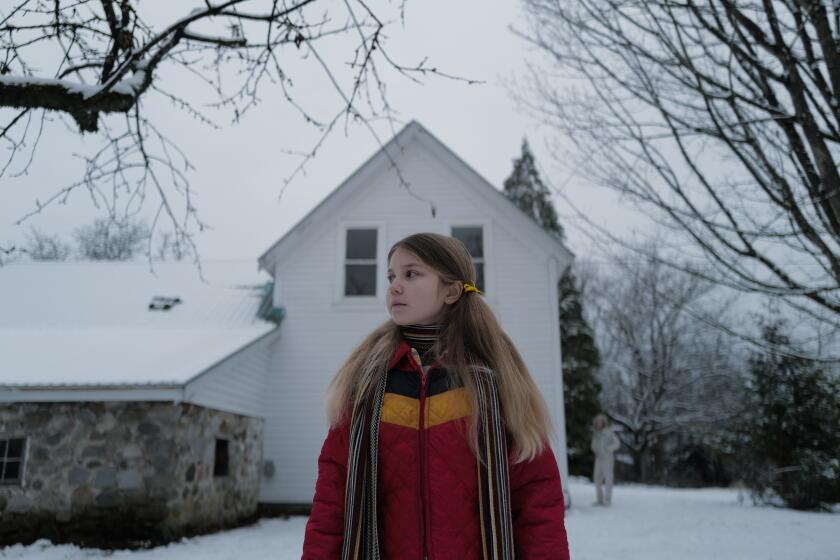Festival ’90 : VICTIMS OF A COMMON TRAGEDY : While Vietnam struggles to recover, its film industry works to heal and humanize those who were once on opposing sides of the war
In 1985, Vietnamese Vice Minister of Culture Dinh Quang asked Judith Ladinsky why her U.S. Committee on Scientific Cooperation With Vietnam did not include culture. She agreed it should, and together they drove to the Vietnam Cinema Department, packed up the best film they knew, drove to the airport and put it on a plane as a submission to the Hawaii International Film Festival.
In Honolulu, we opened the package and were surprised there was a Vietnamese cinema industry. We saw very quickly that Dang Nhat Minh’s “When the Tenth Month Comes” was a masterpiece. Richly photographed, deeply poetic, expressing strong emotions in an elegant filmic style, this work had something to say and a special way of saying it. We accepted it as the first Vietnamese film to be shown at an American film festival and nominated it for our East-West Center Award. The jury gave it an honorable mention and much praise.
That was the beginning of the Vietnam Film Project, the first effort by a consortium of cinema organizations to introduce a whole new film industry to the American public. On the Vietnamese side, it was a chance to reach out to the West, make contact with artists and present their own image of themselves. On our side, we were discovering a new world of cinema, with at least one world-class director and a large number of excellent actors and cameramen.
But for Americans, Vietnam will always have a special significance. Early in the project, a number of people told me the same thing in much the same words: America had gone through a period of denial of the Vietnam War. We were now in a period in which we could acknowledge the war and at last mourn our dead and bind up our wounds. But the next step would be the hardest: finally meeting the Vietnamese. We couldn’t understand what we had done to ourselves until we understood what we’d done to them. Maybe when we met each other, we would find that we could help each other with our grief and recognize each other as victims of a common tragedy.
From the first, the project depended on personal contact. I visited Hanoi for a week in the summer of 1987, viewing films and meeting the staff of the Vietnam Cinema Department.
For many, I was the first American they had met, and it was clearly necessary for some of them to take a number of mental and emotional steps towards me. For me, the Vietnamese were a great surprise: not the gritty, superhumanly tough war veterans I had been led to expect, but tender, teasing, sensitive, emotional, even sentimental. They had clearly suffered terribly during the war--everyone I asked had lost relatives--and the wounds still hurt: One woman couldn’t stop sobbing while we were watching a documentary on the 1972 bombings of Hanoi. When I left, one of my guides asked me, “We treated you as a friend, didn’t we? We didn’t treat you as an enemy?” I was very touched.
Later that year, we received the first Vietnamese to participate in an American film festival: Xuan Son, the director of the film “Fairy Tale for 17-Year Olds” and Nguyen Thu, head of the Vietnam Cinema Department, charged with all film and television production in the country. He issued a general invitation to American filmmakers to work in his country. His invitation has resulted in TV reports, documentaries and feature films in production and negotiation.
We also formed a consortium of American institutions to help print, subtitle and tour Vietnamese films in the United States. In the summer of 1988, I returned to Hanoi with Geoffrey Gilmore (then at UCLA Film and TV Archives) for two weeks to view films. Five films were selected to be shown at the 1988 festival and then to be sent on a national tour. In Hawaii, the Vietnamese films were paired with American ones on the same themes (including the world premiere of Patrick Duncan’s “84 Charlie MoPic”): the war, the home front, the veterans and so on.
We also invited three Vietnamese to Hawaii--Dinh Quang, Dang Nhat Minh and the pioneer filmmaker Bui Dinh Hac--to enter into panel discussions with American directors at the battleship Arizona memorial and to attend the lecture-discussions of critic Roger Ebert on American Vietnam films. This was the first time in America that the two sides had met to discuss the war in public.
Americans were impressed by the Vietnamese films. One American woman in the audience rose to say that “When the Tenth Month Comes” was the first film she had seen that expressed what she had suffered during the war.
The discussions were extremely intense. Dinh Quang was asked whether the Vietnamese made battle films for entertainment. “We’ve lived through 30 years of war,” he replied, “so we don’t have to relive it on the screen. Our films show the impact of the war on people’s lives and thinking. As for entertainment, we lost many, many people in the war. To use that for entertainment would be unworthy.”
When the Vietnamese asked the American filmmakers why they concentrated on battle stories and didn’t explore the reasons and broader implications of the war, the Americans said they wanted to express personal experience rather than history and politics.
Ebert then raised the problem of the scene in “The Deer Hunter” in which Vietnamese are shown torturing Americans by making them play Russian Roulette, a “game” unknown in Vietnam. Translating for Dinh Quang, I had a hard time convincing him that anyone would do such a thing. Dang Nhat Minh rose to say with some passion, “You Americans say you’re making your films from experience. On what experience did you base this?”
The Vietnamese felt that they hardly appeared in films about a war that took place in their own country. They were like game flitting through shadows before the American guns. When they did appear, they were not fully human. “If you had thought of us as human, you would have had to ask yourselves what you were doing on our soil,” Dang Nhat Minh said.
The Americans pointed out that U.S. soldiers were also portrayed inaccurately in a Vietnamese film. Bui Dinh Hac replied, “The Vietnamese audience thought so too. We were wrong to dehumanize the enemy in that film. I apologize.” The Vietnamese also had to face accounts of the mistreatment of American POWs, about which they were surprisingly ignorant.
Not all the exchanges were without humor. Dinh Quang criticized the scene in “Bat 21” in which airplanes attack a column on the Ho Chi Minh trail: “After two runs, the column dissolved in chaos. Moreover, the column contained trucks, tanks and earth-moving equipment. But they could never travel in the same column: They move at different speeds! The American airplanes were just flying around at will! But we had anti-aircraft guns. . . .”
Director Peter Markle replied, “I didn’t have access to an NVA (North Vietnamese Army) adviser.”
Americans and Vietnamese found many differences in each other’s films. The Vietnamese, for instance, did not feel the questions and doubts about the war that are so prominent in American movies. But as we summed up our thoughts and feelings on the last evening--and shed some tears for friends we had lost--we experienced a strong sense of peacefulness, of human union that was far stronger than any differences we had discussed. Films had proven their power to bring people together; and filmmakers had fulfilled the artists’ ancient role as healers. War dehumanizes; art rehumanizes. *
More to Read
Only good movies
Get the Indie Focus newsletter, Mark Olsen's weekly guide to the world of cinema.
You may occasionally receive promotional content from the Los Angeles Times.








